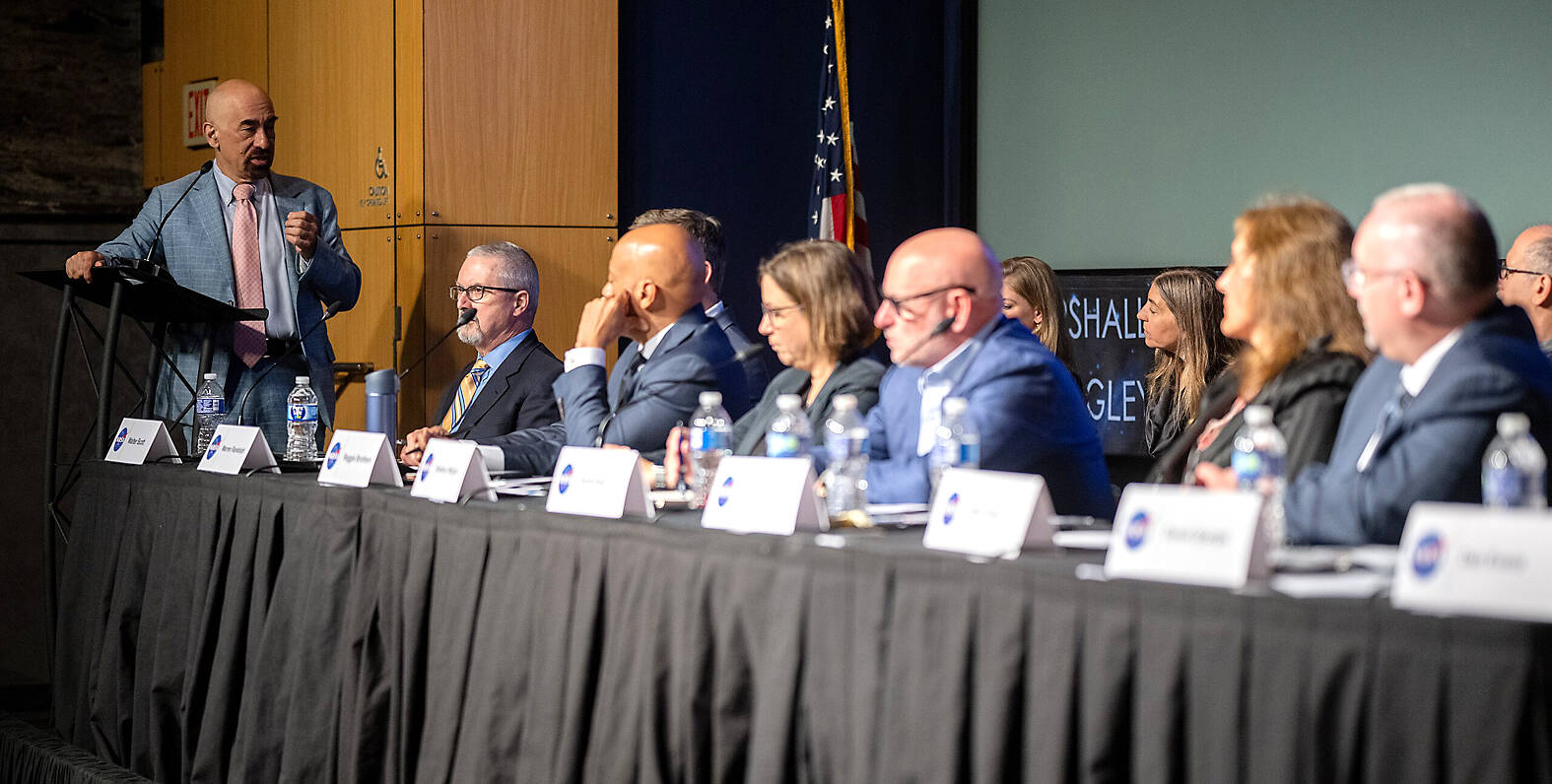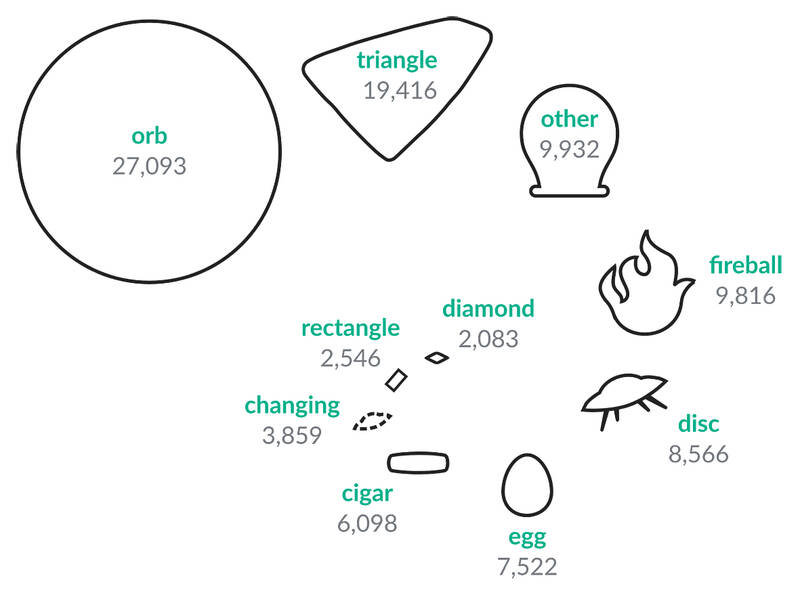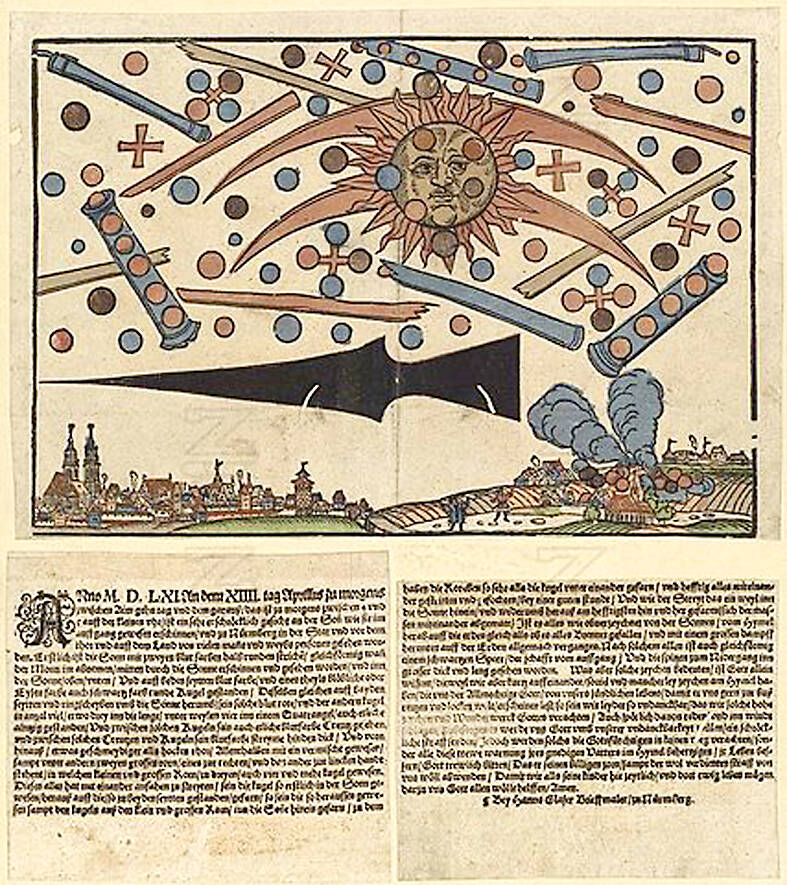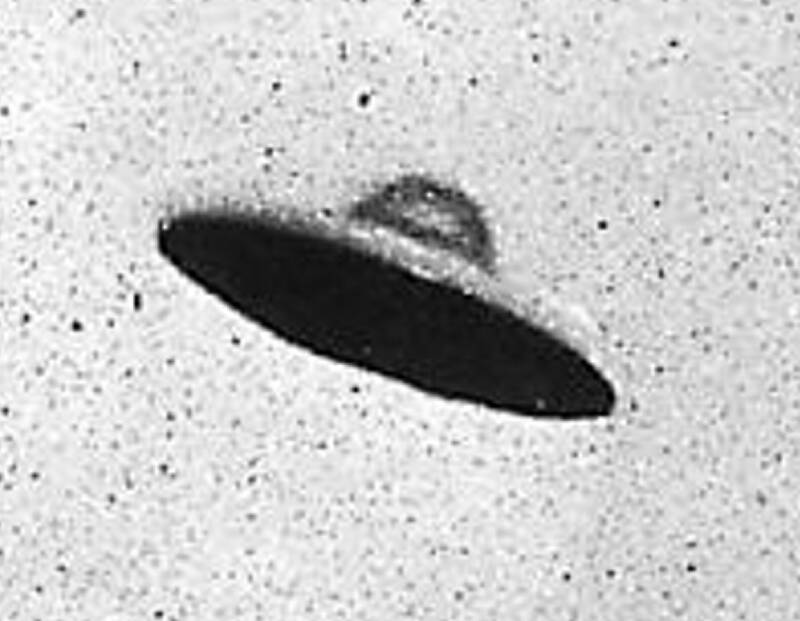If you thought that we were about to finally get the truth about UFOs, think again. At the end of last year, a US government bill that would have mandated the controlled release of all classified documents and artIfacts relating to UFOs was significantly watered down at the last minute so that it would get through Congress.
Interest in unidentified aerial phenomena (UAPs), the new term for UFOs, reignited in June last year when ex-US intelligence agency whistleblower David Grusch told the Debrief website that during his official duties he had discovered the US had indeed been retrieving spacecraft of non-human origin for decades. The claims led to a congressional hearing, in which Grusch and others described what they had gleaned of this super-secret project, or seen with their own eyes during military service. Their testimonies resulted in the new Unidentified Aerial Phenomena Disclosure Act, authored by a bipartisan group of five elected representatives, led by Democrat majority leader Chuck Schumer and Republican senator Mike Rounds.
PUBLIC TRUST

Photo courtesy of Wikimedia Commons
While it is easy to focus on the extraordinary nature of the subject or the credibility of those witnessing UAPs, the prospect of alien spacecraft raises serious issues that go beyond whether we’re alone in the universe. Lots of scientific work is underway not only to look for signs of extraterrestrial life, but more recently to ask what it would mean psychologically for us if aliens really do exist, and — potentially worse — if the authorities have been lying to us about what they know.
When it comes to governments, the primary issue is trust. As Republican congressman Glenn Grothman of Wisconsin explained in his opening remarks on July 26: “The lack of [government] transparency regarding UAPs has fueled wild speculation and debate for decades, eroding public trust in the very institutions that are meant to serve and protect them.”
The Disclosure Act was meant to restore public trust and assure Congress that secret projects were not taking place beyond its oversight.

Photo courtesy of Wikimedia Commons
The legislation was modeled on the president John F Kennedy Assassination Records Collection Act of 1992. Frustrated with the growing public perception that agents of the US government had conspired with the military to assassinate the president — a belief that found its way into the mainstream through Oliver Stone’s 1991 movie JFK — the act established a national archive of all records relating to the assassination, and declassified the vast majority of them. The process was overseen by an independent body.
The original text of the UAP Disclosure Act was similar in that it proposed the creation of a national archive, overseen by an independent panel of nine US citizens. Their job was to decide — free of military, political or corporate influence — when and how to disclose information from the archive. The act would have empowered the panel to hold more hearings, with witnesses afforded immunity from prosecution.
It also proposed that: “The federal government shall exercise ‘eminent domain’ over any and all recovered technologies of unknown origin and biological evidence of non-human intelligence that may be controlled by private persons or entities in the interest of the public good.”

Photo courtesy of Wikimedia Commons
In other words, the US government could commandeer any supposed artifacts held by private citizens or companies, and was then under a duty to disclose them to the public. In parallel, the act also called for the secretary of state to “contact any foreign government that may hold material relevant to unidentified anomalous phenomena, technologies of unknown origin or non-human intelligence and seek disclosure of such material.”
In short, it would finally have revealed the facts about UAPs. But most of these stipulations have now been struck out. All that remains is the archive, but it will not be administered by an independent body. Following the vote, Schumer described the archive as “a major, major win for government transparency” but then went on to say that it was “an outrage” that the proposed review board was not adopted.
“Now it means that declassification of UAP records will be largely up to the same entities that have blocked and obfuscated their disclosure for decades,” he said.

Photo courtesy of Wikimedia Commons
‘LEGISLATIVE FAILURE’
Speaking to News Nation on Dec. 12, Grusch was unequivocal, calling the changes “the greatest legislative failure in American history”.
Not only has the act done little to improve transparency — it is already driving the suspicion that the US government really does have something to hide.
“If it is the case that there is no substance to the UFO/UAP issue beyond misperceptions, paranoia, delusions, hallucinations, gullibility and disinformation then the government, military and academic organizations need to openly and transparently look under every alleged rock in this topic,” says clinical psychologist Daniel Stubbings of Cardiff Metropolitan University. “But they have chosen to do the exact opposite, which increases the suspicion that there is something to hide.”
‘CREDIBLE TOPIC’
People have been seeing unexplainable things in the sky for millennia. While it is easy to dismiss them as hallucinations or flights of fancy, it is much harder to ignore photographs and videos from reputable sources. This is exactly what the office of the director of national intelligence in the US released in 2021. Its report Preliminary Assessment: Unidentified Aerial Phenomena detailed that the US Department of Defense’s Unidentified Aerial Phenomena task force was investigating 144 UAP reports made between 2004 and 2021, mostly by military personnel. It also released three declassified videos of some of these UAPs in action.
It was such material that helped persuade Stubbings to take the subject seriously. He interviewed people who believed they had seen something they could not explain, interested in identifying any underlying mental health needs, or common personality types among them. He found that all kinds of personality profiles see UAPs and many are left with unmet psychological needs.
“Initially I felt confident that the UAP issue could be explained by prosaic psychological and/or situational factors, but the more I looked into real cases the less sure I became,” says Stubbings.
“I started realizing this is a very credible topic. If true, it’s a game-changer,” he says. “If it’s not true, it’s deeply concerning. How did we get to this point in society where we are thinking all this stuff is true, and we’re spending all this money looking into it?”
Traditionally, it is astronomers who look for evidence of other life in the universe. For example, Seti, the search for extraterrestrial intelligence, uses telescopes to look for signals that could be coming from alien civilizations. While Seti was once on the fringes of astronomical science, it is now increasingly seen as mainstream.
Breakthrough Listen is the largest ever scientific research program searching for evidence of civilizations beyond Earth. It aims to survey the one million closest stars to Earth and 100 closest galaxies to our own. Running since January 2016 at the University of California, Berkeley, the project announced a new headquarters in Oxford last October.
“For the project it’s a big vote of confidence from one of the premier universities, astrophysics groups and physics departments in the world,” says Steve Croft, an astronomer at UC Berkeley and the Seti Institute, and also a senior researcher at the new HQ.
In early December, Croft and colleagues published results from the project from more than 140 terabytes of data (the equivalent of watching more than five years of continuous high-definition video) from 97 nearby galaxies. Although they found nothing that looked artificial in this particular run, Croft says: “It’s a start.”
Other astronomers, using different techniques, have seen things that warrant further investigation. Beatriz Villarroel, assistant professor of physics at Stockholm University, is leading a team of astronomers looking at photographic plates of the night sky that date from before the first artificial satellite was launched in 1957.
As satellites orbit the Earth, they can reflect sunlight causing bright glints to appear in the night sky. These leave streaks on astronomical images or spots of light that appear and disappear seemingly at random. Mysteriously, on one plate from April 1950, Villarroel found nine sources of light that appeared within a half-hour period and then vanished. Conducting observations using the Gran Telescopio Canarias, on La Palma in the Canary Islands, revealed nothing at the locations of the light sources that might have flared up.
“There is no astronomical explanation for this type of event,” says Villarroel.
More recently, her team found three bright “stars” on a plate dated July 19 1952 that have since vanished. Provocatively, this is a date burned into the diaries of UFO enthusiasts around the world because it coincides with a famous incident in which pilots and radar operators saw lights they could not explain in the skies above Washington DC.
“I think it’s very important to do this kind of [nearby] searching for extraterrestrial objects because the [astronomical] community mostly looks for things very, very far away. I think it’s time to do something new,” says Villarroel, who is now working to establish the ExoProbe project to look for anomalous objects among the vast number of human satellites currently in orbit.
REDUCING STIGMA
But what happens if she — or anyone else — uncovers irrefutable proof that non-human intelligences have visited or are visiting Earth?
A few years ago, physicist John Priestland, who runs an engineering consultancy, found himself wondering what this would mean to us as individuals.
“If there is something here to be disclosed then I’m very conscious that there are a lot of people who will be affected and there isn’t an entity out there, as far as I can see, that is putting people first,” he says.
So he set up Unhidden, a charity dedicated to decreasing the stigma associated with discussing UAPs, non-human intelligences and the possibility that evidence is being covered up by governments.
It’s a mission that Stubbings agrees with.
“There is still a stigma around this topic; people are so frightened about discussing it,” he says. “But it only takes one account to be real and it changes the narrative of humanity forever.”
This is why the Disclosure Act was seen as important, and its altered version is such a disappointment, even potentially dangerous, says Priestland.
“These days it’s all about ‘my truth,’ except for people who happen to see strange things in the sky. We don’t legitimize their truth.”
He says they need help and support.
“And we need to do that in the context of possible disclosure, because there might suddenly be 8 billion people who have to get used to the fact that they’re being told that there’s a very different worldview by exactly the organizations that they now realise have lied to them for the past 80 years.”

April 14 to April 20 In March 1947, Sising Katadrepan urged the government to drop the “high mountain people” (高山族) designation for Indigenous Taiwanese and refer to them as “Taiwan people” (台灣族). He considered the term derogatory, arguing that it made them sound like animals. The Taiwan Provincial Government agreed to stop using the term, stating that Indigenous Taiwanese suffered all sorts of discrimination and oppression under the Japanese and were forced to live in the mountains as outsiders to society. Now, under the new regime, they would be seen as equals, thus they should be henceforth

Last week, the the National Immigration Agency (NIA) told the legislature that more than 10,000 naturalized Taiwanese citizens from the People’s Republic of China (PRC) risked having their citizenship revoked if they failed to provide proof that they had renounced their Chinese household registration within the next three months. Renunciation is required under the Act Governing Relations Between the People of the Taiwan Area and the Mainland Area (臺灣地區與大陸地區人民關係條例), as amended in 2004, though it was only a legal requirement after 2000. Prior to that, it had been only an administrative requirement since the Nationality Act (國籍法) was established in

With over 80 works on display, this is Louise Bourgeois’ first solo show in Taiwan. Visitors are invited to traverse her world of love and hate, vengeance and acceptance, trauma and reconciliation. Dominating the entrance, the nine-foot-tall Crouching Spider (2003) greets visitors. The creature looms behind the glass facade, symbolic protector and gatekeeper to the intimate journey ahead. Bourgeois, best known for her giant spider sculptures, is one of the most influential artist of the twentieth century. Blending vulnerability and defiance through themes of sexuality, trauma and identity, her work reshaped the landscape of contemporary art with fearless honesty. “People are influenced by

The remains of this Japanese-era trail designed to protect the camphor industry make for a scenic day-hike, a fascinating overnight hike or a challenging multi-day adventure Maolin District (茂林) in Kaohsiung is well known for beautiful roadside scenery, waterfalls, the annual butterfly migration and indigenous culture. A lesser known but worthwhile destination here lies along the very top of the valley: the Liugui Security Path (六龜警備道). This relic of the Japanese era once isolated the Maolin valley from the outside world but now serves to draw tourists in. The path originally ran for about 50km, but not all of this trail is still easily walkable. The nicest section for a simple day hike is the heavily trafficked southern section above Maolin and Wanshan (萬山) villages. Remains of